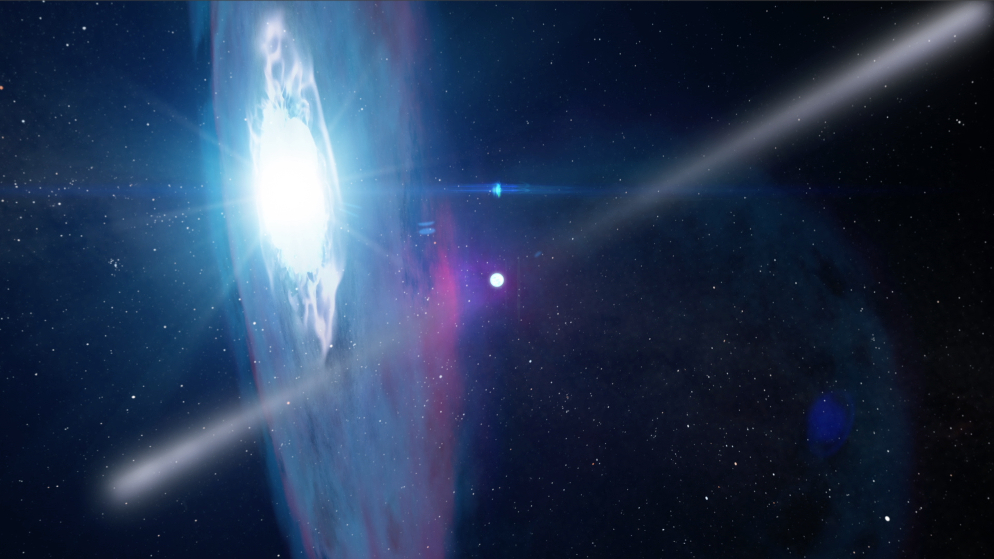
 Credit: NASA's Goddard Space Flight Center
Credit: NASA's Goddard Space Flight Center
Awaiting a High-Energy Encounter
Though most stars appear as single points of light in the night sky, in fact many of these apparently single points consist of two or more individual stars. Analysis of binary stars, in which two stars are bound by gravity and orbit each other around a common center of mass, is the only direct way in which we can know the masses of stars outside our solar system. Interesting things can happen to such pairs of stars as they age, since these stars may not age at the same rate. The more massive star will race through its thermonuclear evolutionary sequence, and, if the star is sufficiently massive enough, it will eventually die in a powerful supernova explosion. This explosion may be powerful enough to tear the binary apart, though perhaps the system may survive. We actually see many examples of binary systems in which a normal star is orbited by the compact object, either a neutron star or black hole, left behind by a supernova. An especially interesting example is the system J2032+4127. The compact object in this system was discovered as a Gamma-ray pulsar by the Fermi Gamma-ray Space Telescope in 2009. Gamma-ray pulsars are magnetized neutron stars which spin rapidly and which emit flashes of Gamma-ray emission as the neutron star rotates. An unusual variation in the rotation of the pulsar, and the rate at which the pulsar's rotation rate slows down, proved a puzzle to observers. Subsequent observations and analysis indicated that these variations are being produced by the slow motion of the neutron star as it moves around an unevolved, massive (15 solar mass) star in a very eccentric, long-period (25-year) orbit. Astronomers suspect this long-period, eccentric orbit might mean that the supernova almost broke the system apart. The image above is an artist's interpretion showing the pulsar, with Gamma-ray emitting beams, approaching the companion star, which is believed to have a large disk of material surrounding it. The neutron star is expected to reach closest approach to its companion in 2018. When this happens, it should pass through the companion star's disk, and interactions between the pulsar and the companion should power high-energy emission and other dramatic changes across the electromagnetic spectrum.
Published: July 27, 2015
<
HEA Dictionary ● Archive
● Search HEAPOW
● Other Languages
● HEAPOW on Facebook
● Download all Images
● Education ● HEAD
>

Each week the HEASARC
brings you new, exciting and beautiful images from X-ray and Gamma ray
astronomy. Check back each week and be sure to check out the HEAPOW archive!
Page Author: Dr. Michael F. Corcoran
Last modified Monday, 26-Feb-2024 17:22:00 EST


